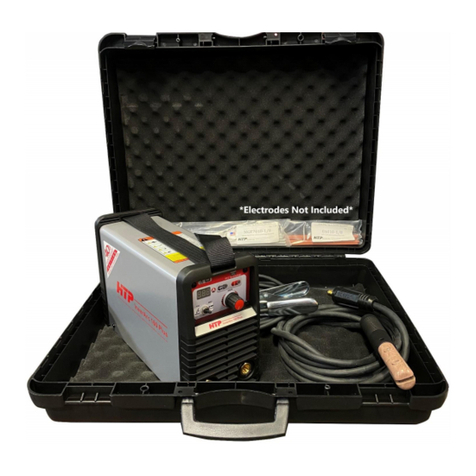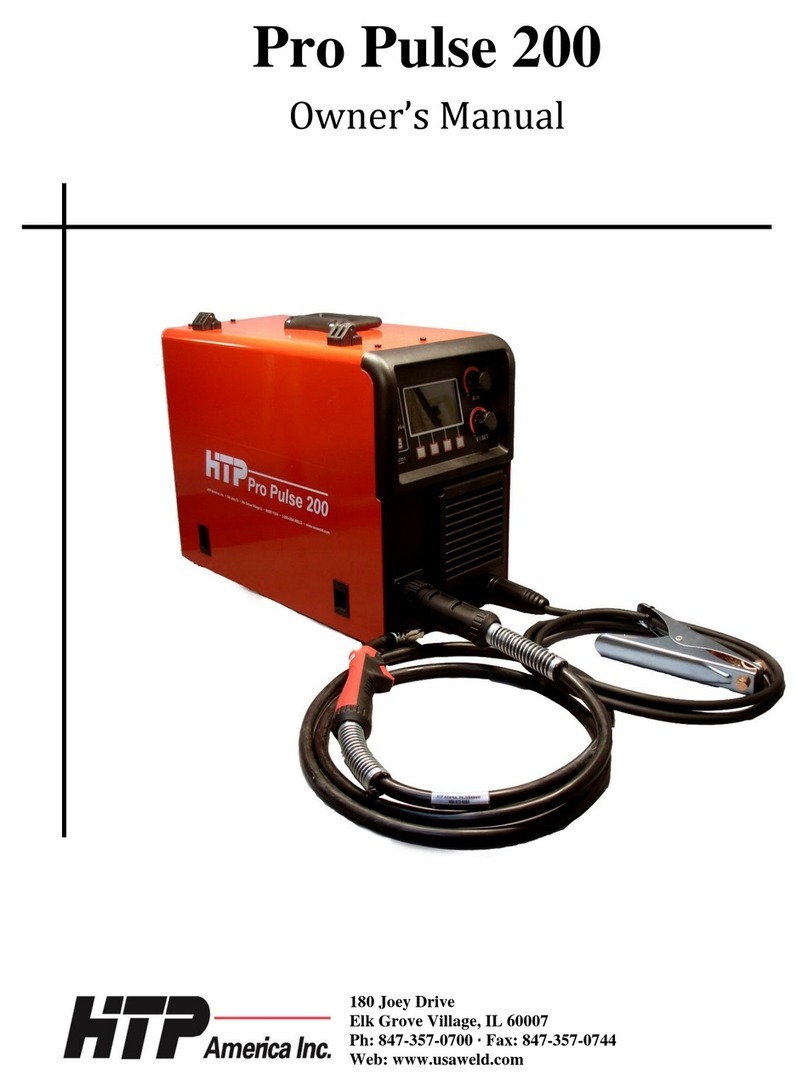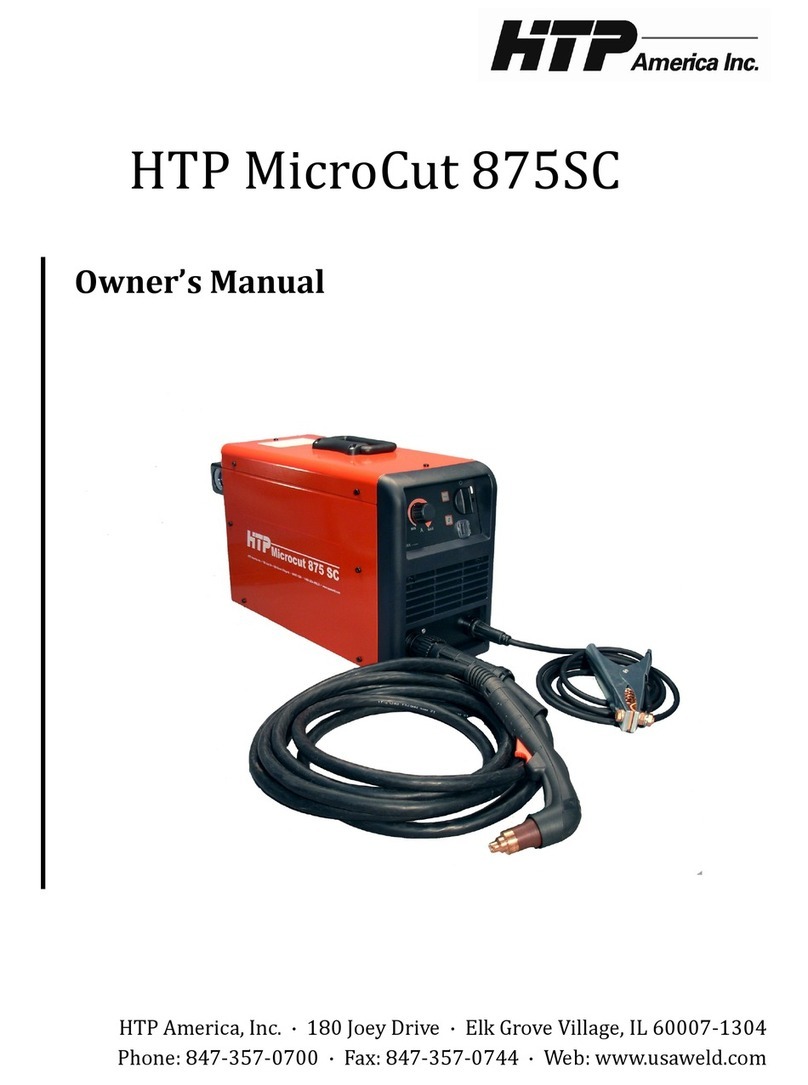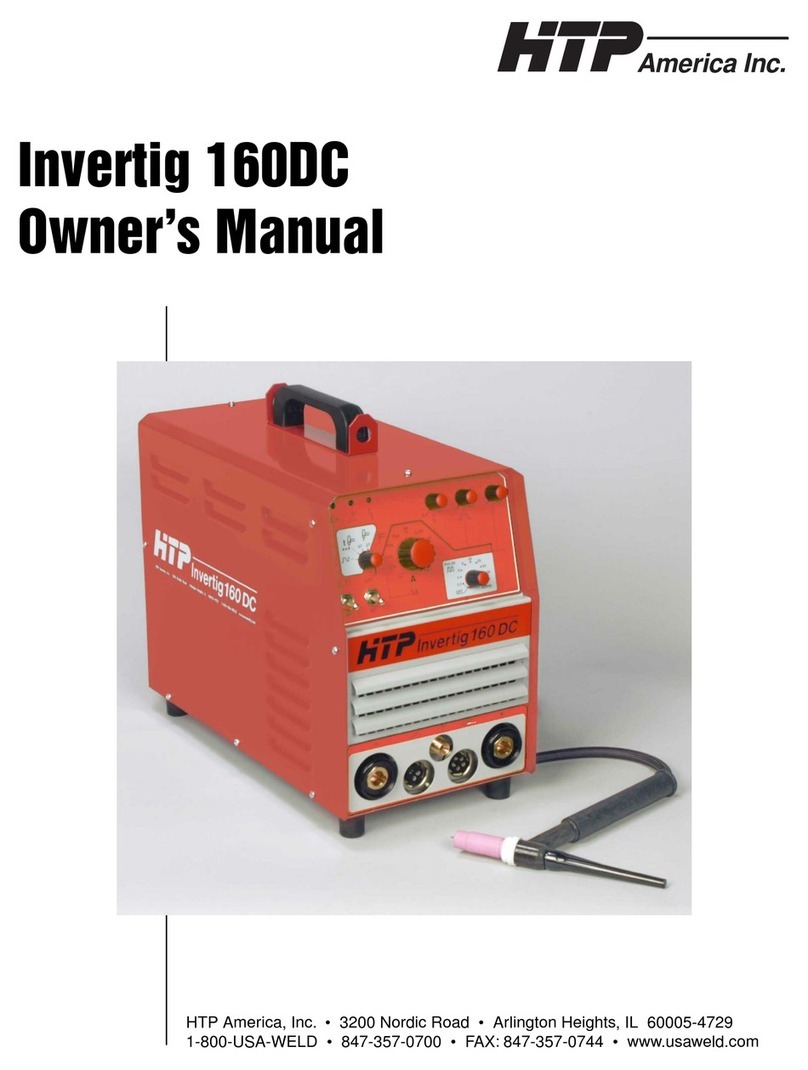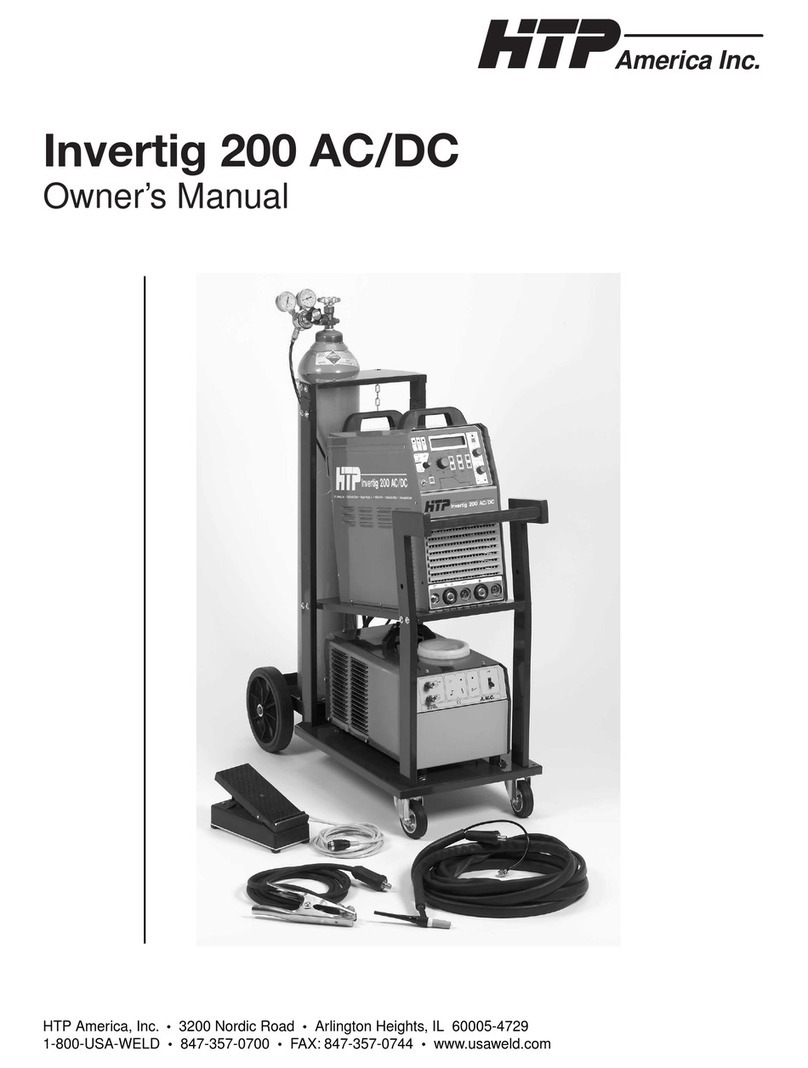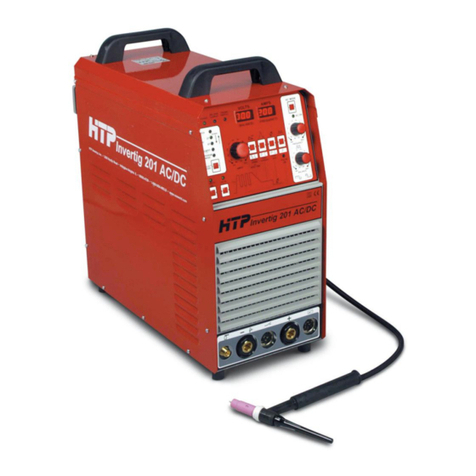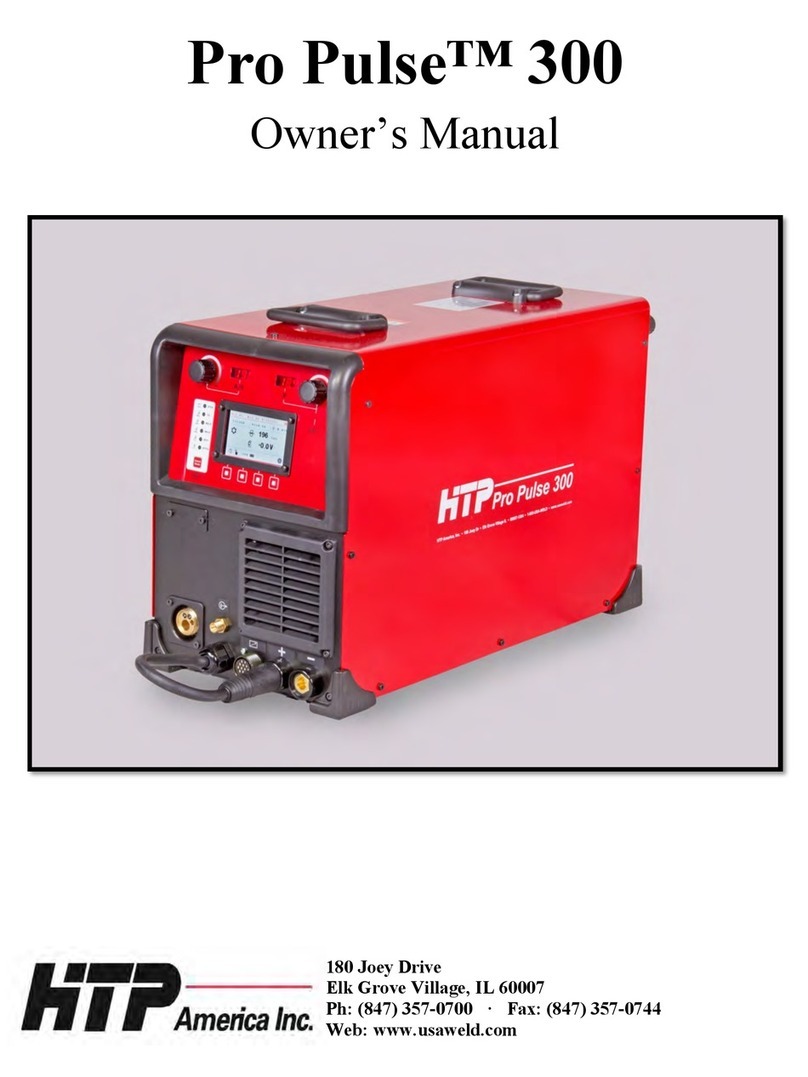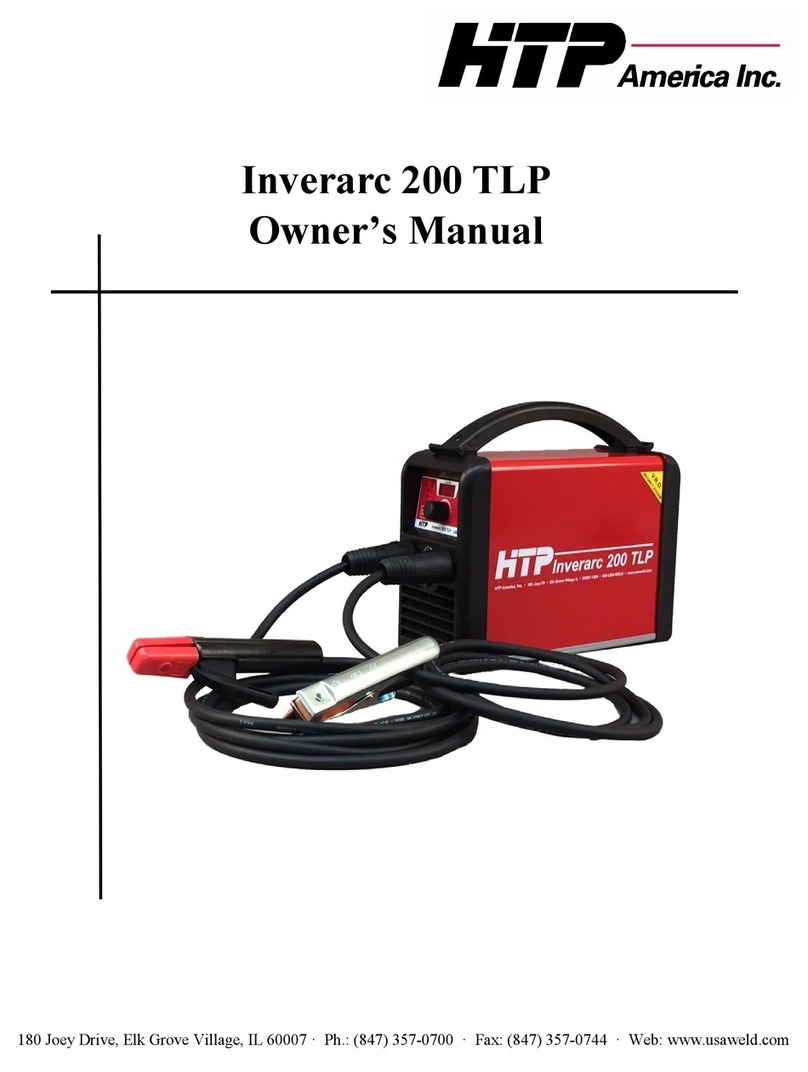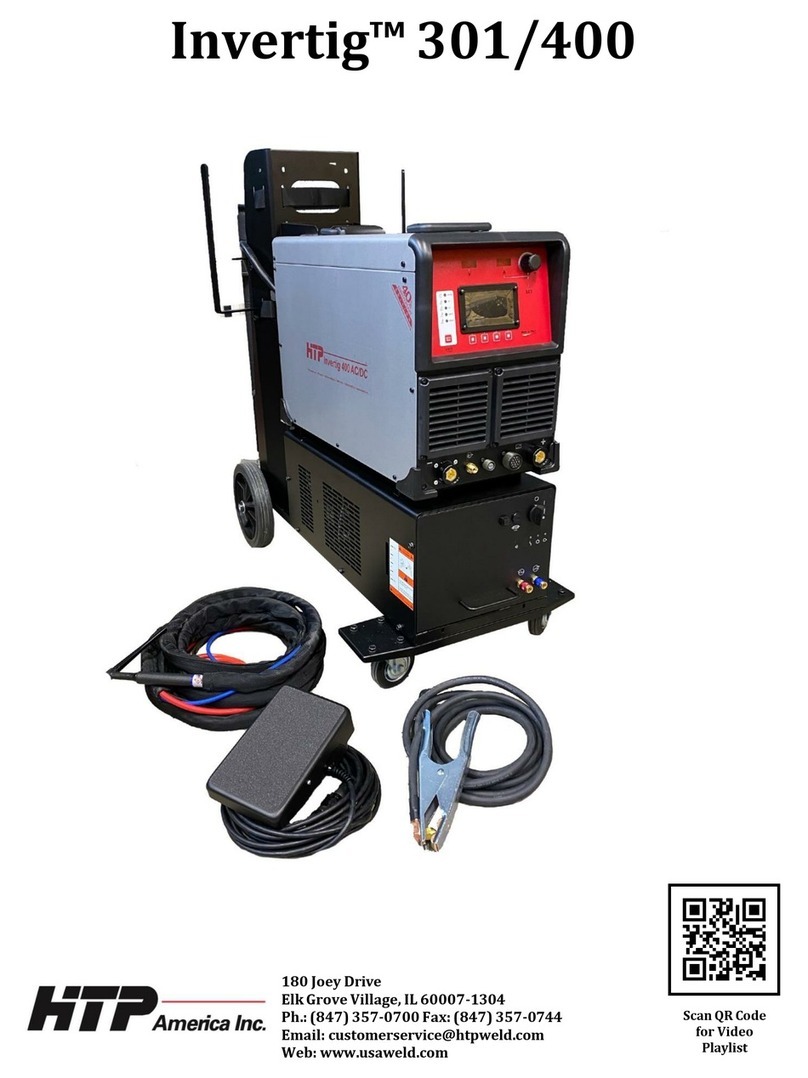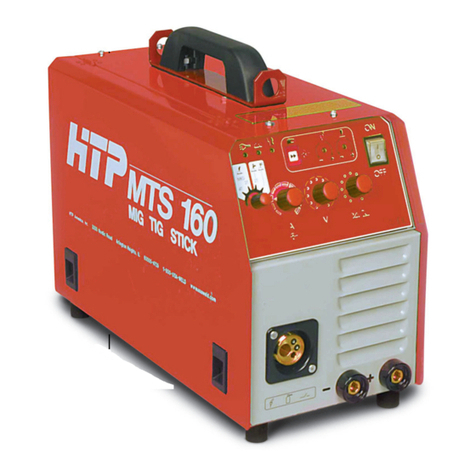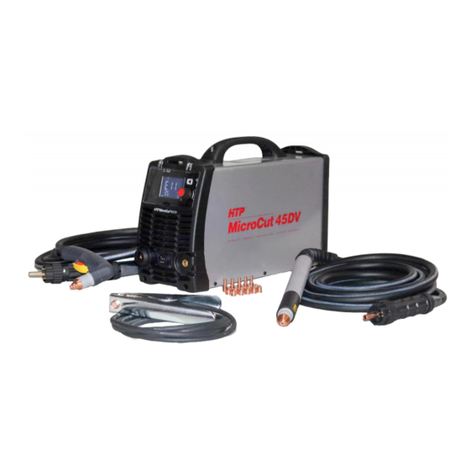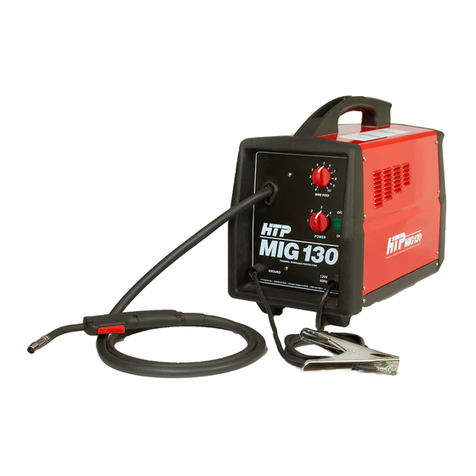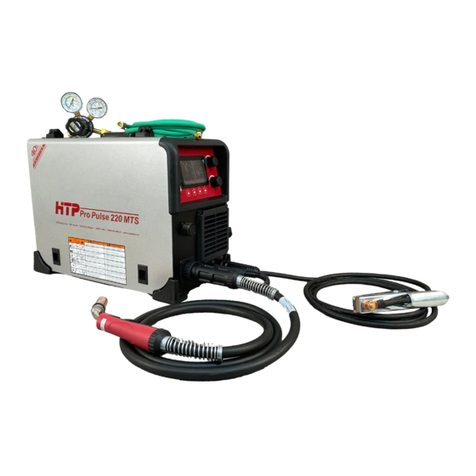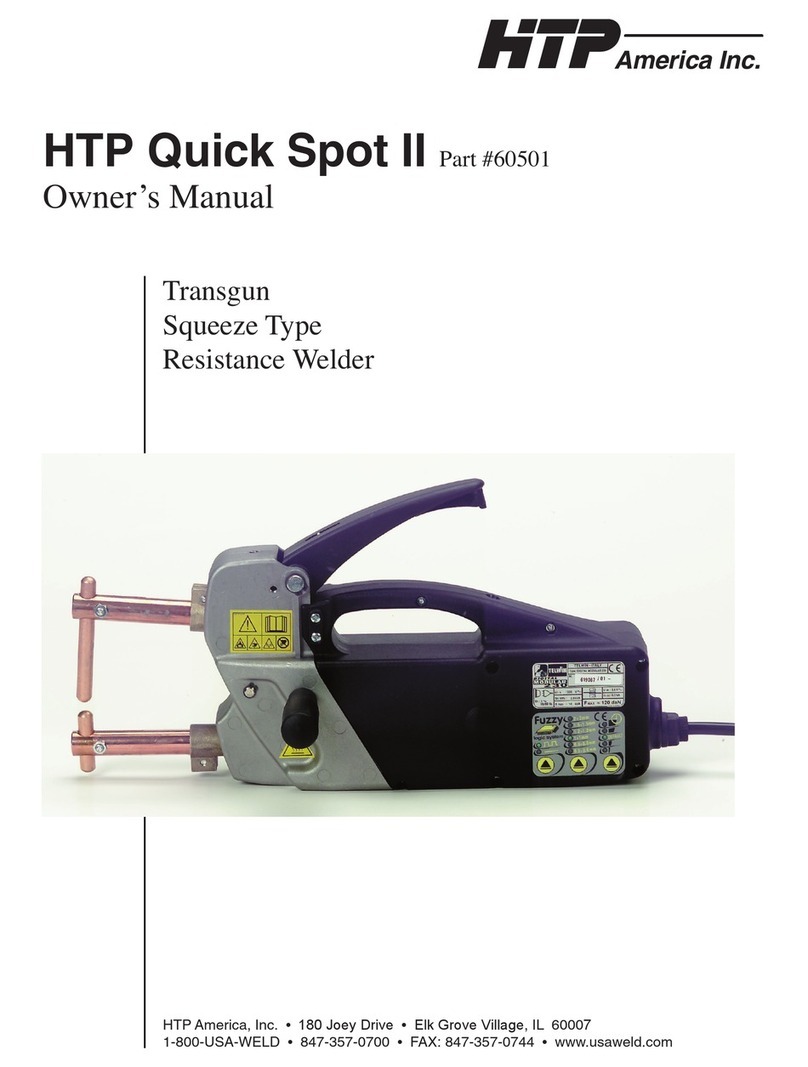
Safety Suggestions
Electric arc welding produces ultra-violet rays, which are harmful to skin and eyes. Ultra-violet radiation
can penetrate lightweight clothing, reect from light colored surfaces, and burn the skin and eyes. Wear
ameproof welding gloves which are not oily or greasy. The oil or grease on the gloves may ignite. Wear a
heavy, pocket-less, long sleeve shirt, cuess trousers, and high-topped work shoes. Wear a full-face welding
helmet with a number eight or darker lens and a cap. These precautions will protect eyes, hair, face, and skin
from arc rays and hot material.
For more information, refer to the following standards and comply as applicable.
1. ANSI Standard Z49.1 SAFETY IN WELDING AND CUTTING, obtainable from the
American Welding Society, 2051 NW 7th St., Miami, FL 33125.
2. ANSI Standard Z87.1 SAFE PRACTICE FOR OCCUPATION AND EDUCATIONAL EYE AND FACE
PROTECTION, obtainable from American National Standards Institute, 1430 Broadway,
New York, NY 10018.
3. America Welding Society Standard A6.0 WELDING AND CUTTING CONTAINERS WHICH
HAVE HELD COMBUSTIBLES, obtainable same as item 1.
4. NFPA STANDARD 51. OXYGEN-FUEL GAS SYSTEMS FOR WELDING AND CUTTING, obtainable from
the National Fire Protection Assoc., 470 Atlantic Avenue, Boston, MA 02210.
5. NFPA Standard 51B. CUTTING AND WELDING PROCESSES, obtainable same as item 4.
6. CGA PAMPHLET P-1. SAFE HANDLING OF COMPRESSED GASES IN CYLINDERS, obtainable from
the Compressed Gas Association, 500 Fifth Avenue, New York, NY 10036.
7. OSHA Standard 29 CFR, Part 1910, Subpart Q WELDING, CUTTING AND BRAZING.
• To avoid re, do not weld on wood, plastic tile, or
carpeted oors. Concrete or masonry oors are safest.
• Do not weld on drums, barrels, tanks or other containers
until they have been cleared as described in AWS
Standard A6.01.
• Provide adequate ventilation in the welding area at all
times. Do not weld on galvanized zinc, cadmium or lead
beryllium materials unless you are POSITIVE sucient
ventilation is provided. These materials produce toxic fumes.
•
Do not weld in areas close to degreasing or spraying opera-
tions. Chlorinated hydrocarbon vapors may react with the
ultra-violet rays and form highly toxic phosgene gas.
• If you develop momentary eye, nose or throat irritation
during welding, stop welding immediately. This is an
indication that ventilation is not adequate. Do not
continue to weld until ventilation is improved.
• Exposed, electrically hot conductors or other bare metal
in the welding circuit, or ungrounded electrically hot
equipment can fatally shock a person whose body
becomes a conductor. Do not stand, sit, lie, lean on or
touch a wet surface when welding.
• Frequently inspect cables for wear, cracks, and damage.
Replace those with excessively worn insulation to avoid
a possible lethal shock from bared cable.
Electrical Connection
Your Invertig 221 AC/DC operates on single-phase, 230 volt
power (+/- 15%). The machine is shipped with a plug. The
input power cord has 3 wires. The green wire is ground,
and the black and white wires are the hot leads.
The machine draws 36 amps out of the wall when operat-
ing at a welding output of 220 amps in the TIG mode and 44
amps when welding at an output of 200 amps in the stick
mode.
The Invertig 221 DV has the ability to operate on either 110 or
230 volts. All you need to do is change the plug. When wiring
the machine for 110 volts, you typically use an adapter cable
fitted with a 110 volt plug on one end and a 220 volt female
receptacle, one that matches the 220 volt plug on your
machine's power cord, on the other.
On 230 volts, the machine draws 26 amps out of the wall
when operating at a welding output of 220 amps in the TIG
mode and 32 amps when welding at an output of 200 amps in
the stick mode.
On 110 volts, the maximum output is 155 amps. The output
must be limited to 130 amps in the TIG welding mode to run
on a 30 amp breaker, 85 amps to run on a 20 amp breaker, and
67 amps to run on a 15 amp breaker. In the stick mode, the
output must be limited to 100 amps to run on a 30 amp
breaker, 65 amps to run on a 20 amp breaker, and 50 amps to
run on a 15 amp breaker.
All electrical connections should be performed by a
qualied electrician in accordance with the National
Electrical Code and local codes and ordinances.
4
